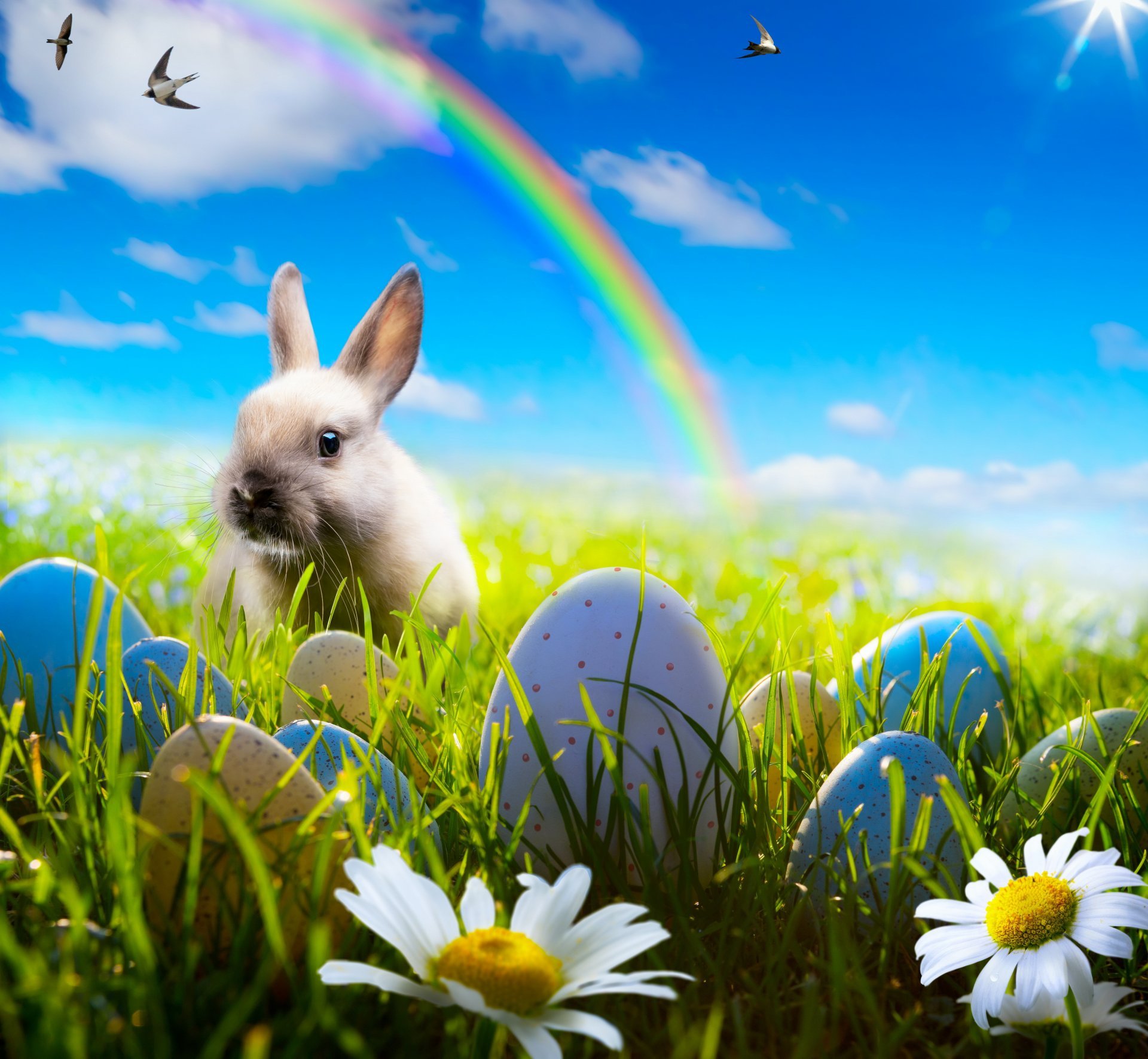 See Table Below for Easter Sunday from 2020 through 2049.
See Table Below for Easter Sunday from 2020 through 2049.
Just as there are many traditions surrounding the celebration of Easter, there are many stories and legends surrounding the origin of the word Easter.
Many traditions have viewed this time as a celebration of spring, new life and new beginnings each with their own traditions and points of view. Many of the traditions we have today are inherited from times past.
Eostre, Eostare or Ostara is a Norse, German pagan Anglo-Saxon Goddess of the East, the sunrise or the dawning of a new day, the new season of spring.
In Jacob Grimm’s 1835 book Deutsche Mythologie, he suggests Eostre must have been a local version of a more widespread Germanic goddess named Ostara. Some historians wonder if Ostara as a goddess ever existed?
Another book from 1874 also titled Deutsche Mythologie, by Adolf Holtzmann ponders whether the already-popular German tradition of the “Easter hare” (or Easter bunny as we call it today) was associated with the goddess Ostara saying:
The Easter Hare is inexplicable to to me, but probably the hare was the sacred animal of Ostara; just as there is a hare on the statue of [the Celtic goddess] Abnoba.” a German Translation from Stephen Winick
It seems there are two version of the story where Eostre finds a bird with frozen wings and saves it by turning it into a rabbit with the ability to lay eggs. The other story describes a bird who bragged loudly about her ability to lay beautiful eggs and Eostre turned the overly proud bird into a rabbit who could only lay beautiful eggs once a year.
In a 2016 post Stephen Winick traced versions of the Eostare story back to the June 8, 1889 issue of the journal American Notes and Queries, page 64:
The Hare and Easter –Whence comes the legend of the Hare in connection with Easter?
–RWH PHILADELPHIA PAIn Germany and among the Pennsylvania Germans toy rabbits or hares made of canton flannel stuffed with cotton are given as gifts on Easter morning. The children are told that this Osh’ter Has laid the Easter eggs. This curious idea is thus explained: The hare was originally a bird, and was changed into a quadruped by the goddess Ostara; in gratitude to Ostara or Eastre, the hare exercises its original bird function to lay eggs for the goddess on her festal day.
No source was listed with this reference. Then Winick found a reference from in 1882, with a story describing Ostara who “rode over the fields in the spring in a wagon drawn by hares.”
Winkick found in American Notes and Queries a note by H. Krebs in the first volume of the English journal Folk-Lore in 1883 with a citation:
Easter-Eggs and the Hare.—Some time ago the question was raised how it came that, according to South German still prevailing folk-lore, the Hare is believed by children to lay the Easter-eggs. I venture now to offer a probable answer to it. Originally the hare seems to have been a bird which the ancient Teutonic goddess Ostara (the Anglo-Saxon Eàstre or Eostre, as Bede calls her) transformed into a quadruped. For this reason the Hare, in grateful recollection of its former quality as bird and swift messenger of the Spring-Goddess, is able to lay eggs on her festival at Easter-time (r. Oberle’s Ueberreste germanischen Heidentums im Christentum, 8vo, Baden-Baden, 1883, p. 104.)
Pesach (Hebrew word for Passover) is a Spring Holy Day
While pagans celebrated the rites of spring, the Jews celebrated Passover, the anniversary of the day God delivered them out of Egyptian bondage. God had demanded the firstborn male from every household, but had promised to pass over any house with the blood of a perfect lamb smeared on its doorpost. God then commanded the Jews to remember their deliverance through the ceremony of the Passover near the beginning of Spring.
Easter: An Early Celebration of Christ’s Resurrection
The Frankish church or Germans who settled in Rome during the fifth century celebrated the resurrection and the name of the festival translated into German, ostern, meaning sunrise. One theory is that Ostern is the origin of the word Easter.
Easter in the current era is a time to celebrate warmer days in the Northern Hemisphere, the blossoming flowers and abundance as the light is returning. This is when the Earth herself has over come the death of winter and is bursting forth – as in being literally resurrected into new life.
Traditions Old and New
Some will find their family traditions help them to remember their connection to the Earth and to Great Spirit. Others will find it is time to create their own traditions and ways to honor this time. Connecting to your heart knowing and remembering we are in relationship to the Earth is the leading edge of working with this time.
This means that no one tradition, old or new, is better than any other. The key is to follow your heart and engage the traditions and practices that inspire feelings of love and connection with Great Mystery in whatever ways work for you
Easter Usually happens in April as shown in the table below
The April Full Moon has many names including: the Pink Moon, for all the pink flowers that bloom in the early spring. Some call it the Sprouting Grass Moon, Fish Moon, Hare Moon, and the Old English/Anglo-Saxon name is Egg Moon.
It is also known as the Paschal Moon because it is used to calculate the date for Easter.
The Easter holiday (holy day) is determined by the first Sunday after the first Full Moon after the Spring (March) Equinox.
This is why Easter is not the same date every year and is a rare holy day in the Christian tradition that is lunar based meaning it is calculated based on the Full Moon.
Easter Sunday from 2020 to 2049 |
||||||||||
| April | 12 | 2020 | April | 21 | 2030 | April | 01 | 2040 | ||
| April | 04 | 2021 | April | 13 | 2031 | April | 21 | 2041 | ||
| April | 17 | 2022 | March | 28 | 2032 | April | 06 | 2042 | ||
| April | 09 | 2023 | April | 17 | 2033 | March | 29 | 2043 | ||
| March | 31 | 2024 | April | 09 | 2034 | April | 17 | 2044 | ||
| April | 20 | 2025 | March | 25 | 2035 | April | 09 | 2045 | ||
| April | 05 | 2026 | April | 13 | 2036 | March | 25 | 2046 | ||
| March | 28 | 2027 | April | 05 | 2037 | April | 14 | 2047 | ||
| April | 16 | 2028 | April | 25 | 2038 | April | 05 | 2048 | ||
| April | 01 | 2029 | April | 10 | 2039 | April | 18 | 2049 | ||

Trackbacks/Pingbacks